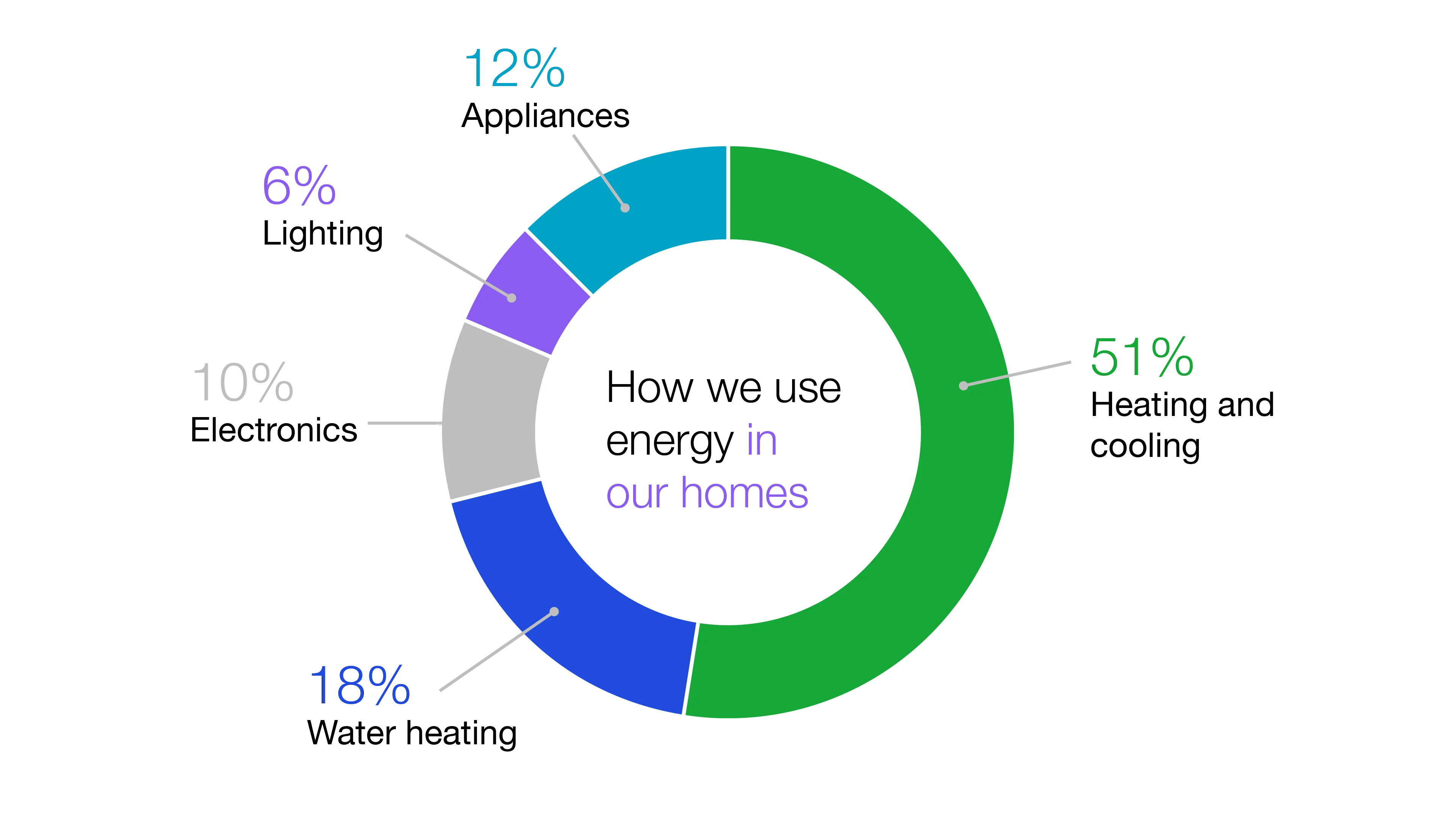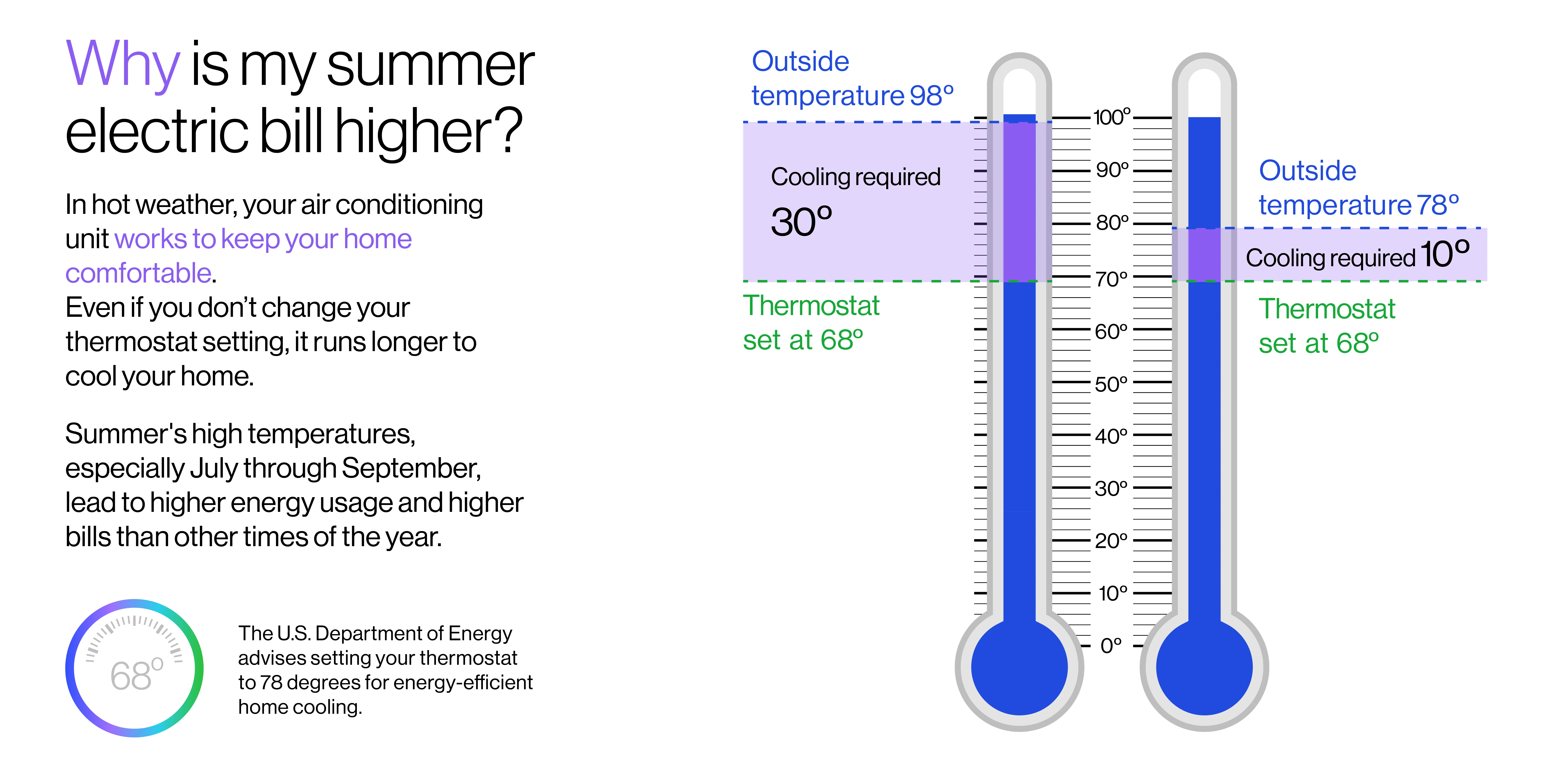AES Indiana wants to help you save energy and money by showing you how your home uses energy.
Summer and winter utility bills are often higher because people spend more time inside, use more electricity and run their heating and cooling systems more often. As the chart below shows, heating and cooling make up more than half the energy used in your home.

Cold weather:
When the outside temperature drops, the rate of heat loss from your home increases, forcing the furnace to work harder to replace that lost heat. Cold air naturally holds less moisture than warm air, which means dry air is harder to heat, further stressing the furnace.

Hot weather:
Your central air conditioner uses a single air distribution system. In hot weather, your air conditioning unit runs longer to keep your home cool, even if you don't adjust the thermostat.

FAQs
Your bill may increase due to several factors, but the primary reason for high bills is increased usage. Bills often rise in winter and summer due to higher use of heating and air conditioning, which makes up more than 40-50 percent of your bill.
- Billing cycle. It’s normal for the number of days in each billing cycle to change from month to month. More days per cycle will cause your bill to be higher. You can see the number of days in your billing cycle on the front page of your bill.
- Weather factors. Your electric bill is based on the weather during your specific billing cycle, meaning even if the overall month's weather is mild, a particularly cold or hot period within your billing cycle can lead to a higher bill.
AES Indiana uses past usage from previous billing periods for the same time of year to estimate a customer's bill when they are unable to read the meter (traditional meter). This is called estimated reading adjustment and will need an actual meter reading taken by a utility worker. Your next bill will reflect either a credit or balance due on the account. Customers can avoid estimated bills by:
- Monitor your usage to better minimize the variance between estimated and actual readings.
- Ensure your meter is accessible to take a physical reading.
- Contact AES Indiana Customer Service if your estimated bill appears significantly higher.
A smart meter is a digital electric meter with remote data capabilities. It replaces traditional meters with two-way communication technology, allowing for secure virtual readings and more accurate billing. Smart meters are part of electric grid updates utilizing new technologies. Learn more about smart meters.
AES Indiana trusts our vendors and deployed equipment for grid modernization. The selected meter make and model pass rigorous tests for accuracy under various electrical loads and weather conditions, approved by the American National Standards Institute (ANSI). In addition, AES Indiana tests a percentage of meters from vendors before installation and monitors accuracy with routine samples or periodic testing.
Questions
Our Customer Care team is ready to assist you via chat at aesindiana.com or by calling 317-261-8222 (Monday through Friday, 8:00 AM to 5:00 PM).
